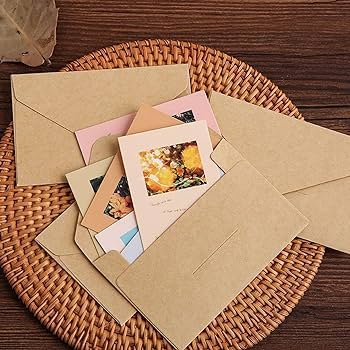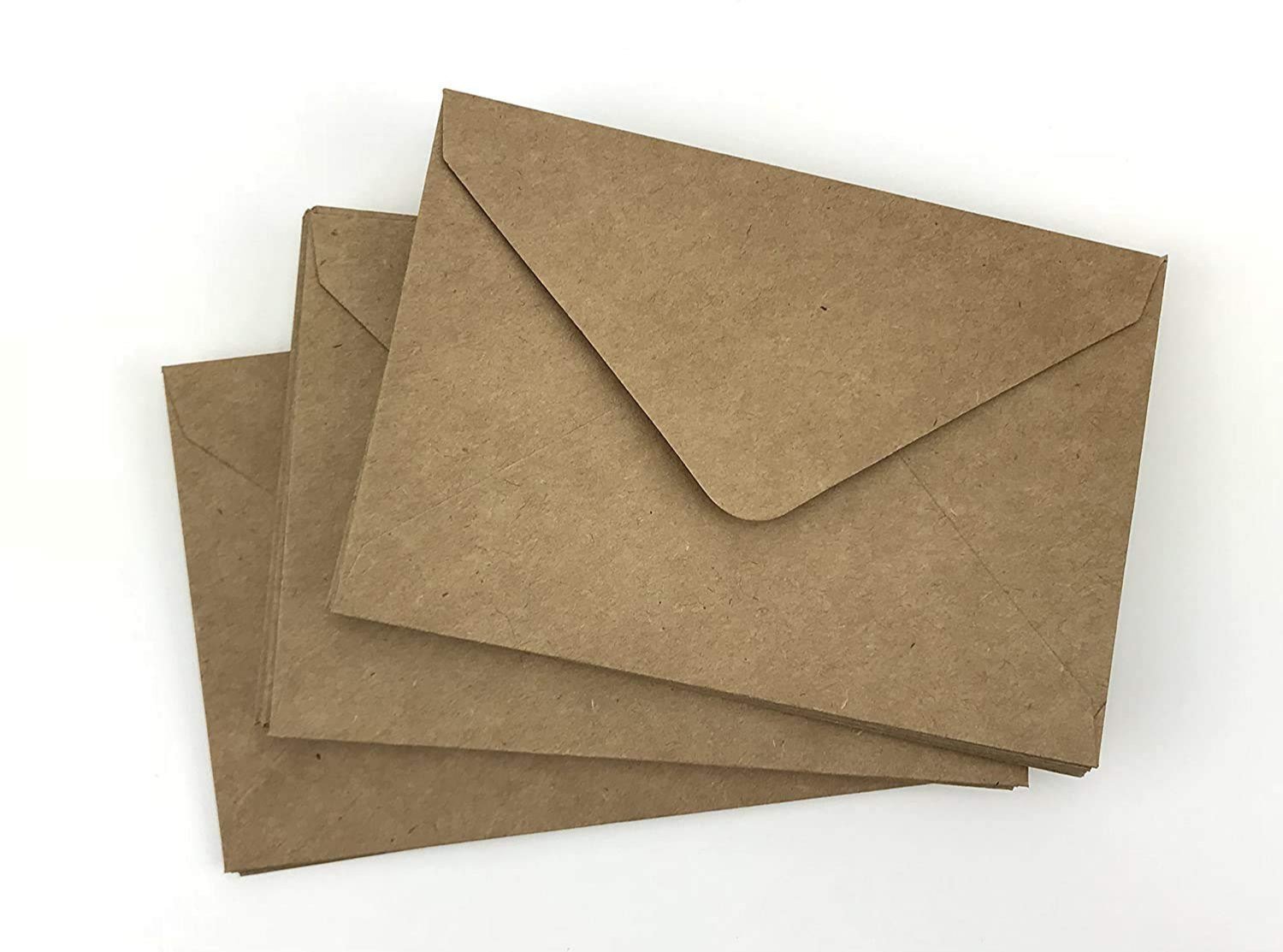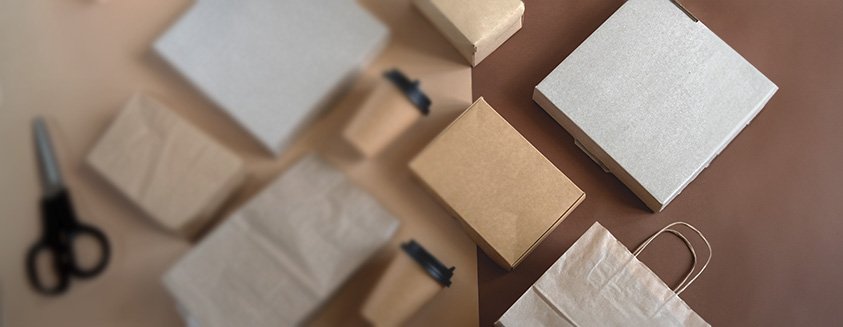Paper Envelope play a crucial role in both personal and business communication, providing a means to deliver messages, documents, and goods. The type of paper used to create these envelopes significantly impacts their functionality, appearance, and durability. In this comprehensive guide, we’ll explore the different types of paper used for envelopes, the factors influencing their selection, and their respective applications.
Introduction to Envelope Paper
Envelope paper must balance between being sturdy enough to protect its contents and flexible enough to be easily folded and sealed. The choice of paper type can affect not only the envelope’s physical properties but also its aesthetic appeal and suitability for various printing techniques.
Common Types of Paper Used for Envelopes
Wove Paper: Wove paper is a popular choice for envelopes due to its smooth surface and high quality. It is created using a fine wire mesh during the papermaking process, resulting in a uniform texture. Wove paper is commonly used for business correspondence and personal stationery, offering a professional look and feel.
Kraft Paper: Kraft paper is known for its durability and strength. It is made from wood pulp through a chemical process that removes lignin, resulting in a strong, brown paper. Kraft paper envelopes are ideal for mailing heavier items or for use in environments where the envelope might endure rough handling. They are often used for shipping and packaging purposes.
Recycled Paper: Recycled paper is an eco-friendly option, made from post-consumer waste. These papers vary in texture and quality, depending on the materials used in the recycling process. Recycled paper envelopes are a great choice for environmentally conscious businesses and individuals, offering both sustainability and practicality.
Bond Paper: Bond paper is a high-quality paper known for its strength and durability. It is often used for official documents and important correspondence. Bond paper envelopes provide a premium feel and are suitable for professional settings where the quality of presentation matters.
Textured Paper: Textured paper adds an element of sophistication to envelopes. This type of paper can have various textures, such as linen, laid, or felt, which create a tactile experience for the recipient. Textured paper envelopes are often used for invitations, greeting cards, and other special occasions.
Coated Paper: Coated paper has a smooth, shiny surface achieved through a coating process. This paper type is excellent for printing high-quality images and graphics. Coated paper envelopes are frequently used for marketing materials, brochures, and any situation where a polished appearance is desired.
Factors Influencing the Choice of Envelope Paper
Purpose and Functionality: The intended use of the envelope significantly influences the choice of paper. For instance, envelopes meant for heavy-duty mailing or packaging require sturdy paper like Kraft, while formal invitations might be better suited to textured or coated paper.
Printing Requirements: The type of paper chosen for envelopes also depends on the printing methods to be used. For high-quality, detailed printing, coated paper or high-quality bond paper is preferred. For simpler, more utilitarian printing, wove or recycled paper may suffice.
Environmental Considerations: With increasing awareness of environmental sustainability, recycled paper has become a popular choice. It offers a way to reduce environmental impact while still providing functional and aesthetically pleasing envelopes.
Aesthetic Appeal: The appearance and texture of the envelope can enhance the overall presentation of its contents. Textured papers, such as linen or laid paper, provide a unique look and feel that can make a lasting impression on the recipient.
Cost: The cost of paper can vary significantly depending on its quality and type. Businesses and individuals must balance their budget constraints with the desired quality and functionality of the envelopes.
Specialty Papers for Envelopes
Tyvek Paper: Tyvek is a synthetic material made from high-density polyethylene fibers. It is lightweight, durable, and water-resistant, making it ideal for envelopes that need extra protection. Tyvek® envelopes are often used for important documents, legal papers, and other sensitive materials that require secure mailing.
Vellum Paper: Vellum paper is a translucent paper that adds a touch of elegance and sophistication. It is often used for overlay envelopes or as an inner lining for more traditional envelope designs. Vellum envelopes are popular for wedding invitations, upscale events, and artistic correspondence.
Cotton Fiber Paper: Cotton fiber paper is made from cotton linters or a blend of cotton and wood pulp. It has a luxurious feel and is highly durable. Cotton fiber envelopes are suitable for important correspondence, archival purposes, and high-end invitations.
Manufacturing Process of Envelope Paper
Pulping: The process begins with pulping, where raw materials like wood chips or recycled paper are broken down into fibers. This can be done mechanically or chemically, depending on the type of paper being produced.
Forming: The pulp is then spread onto a wire mesh to form a paper sheet. This step determines the texture of the paper. For wove paper, a fine wire mesh is used, while laid paper uses a mesh with a distinct pattern.
Pressing and Drying: The formed paper sheet is pressed to remove excess water and then dried. This step ensures the paper has the desired thickness and consistency.
Finishing: The paper undergoes various finishing processes, such as coating, calendering, or texturing, to achieve the desired surface properties. Coated paper, for instance, receives a layer of coating to enhance its smoothness and printability.
Applications of Different Envelope Papers
Business Correspondence: For business communication, wove and bond papers are commonly used due to their professional appearance and high quality. These papers are suitable for letters, invoices, and official documents.
Personal Correspondence: Personal letters, greeting cards, and invitations often use textured or vellum paper for a more personalized and elegant touch. These papers add a tactile and visual appeal that enhances the recipient’s experience.
Marketing Materials: Marketing materials, such as brochures and promotional mailers, benefit from coated paper due to its ability to reproduce high-quality images and graphics. Coated paper envelopes help ensure that marketing messages are delivered in a visually appealing manner.
Shipping and Packaging: Kraft paper is the go-to choice for shipping and packaging envelopes. Its strength and durability make it ideal for protecting items during transit. Tyvek envelopes are also used for valuable or sensitive items that require extra protection.
Conclusion
Choosing the right type of paper for envelopes involves considering various factors, including the intended use, printing requirements, environmental impact, aesthetic appeal, and cost. Whether for business, personal, or marketing purposes, the right paper can enhance the functionality and appearance of the envelope, ensuring that its contents are delivered securely and stylishly. By understanding the different types of paper available and their respective advantages, you can make an informed choice that meets your specific needs and preferences.
In summary, the world of envelope paper is diverse and offers numerous options to suit various purposes. From the smooth and professional wove paper to the eco-friendly recycled paper, each type has its unique characteristics and applications. By selecting the appropriate paper type, you can ensure that your envelopes not only serve their functional purpose but also leave a positive impression on the recipient.


